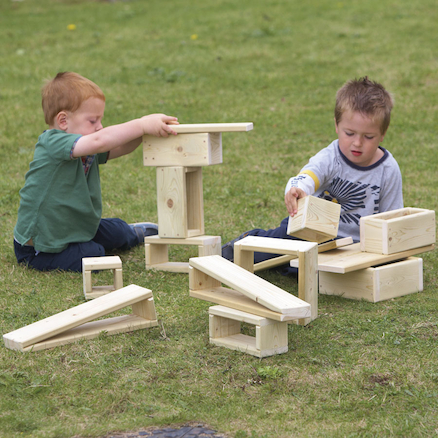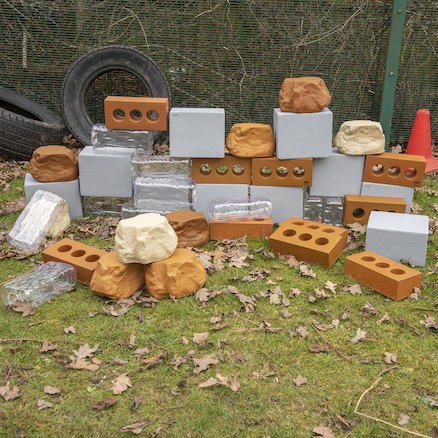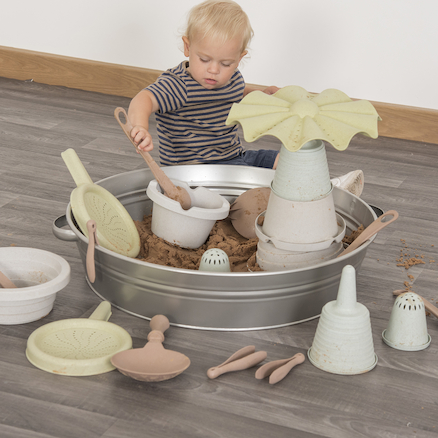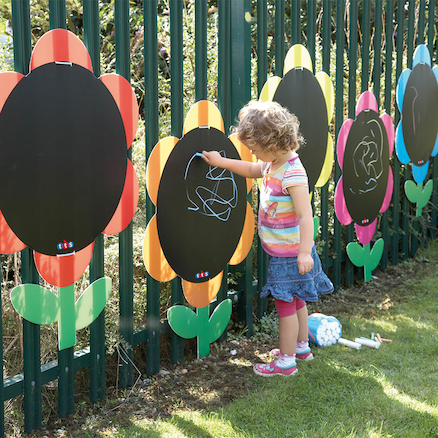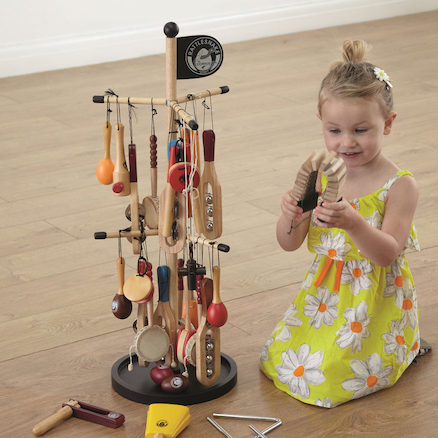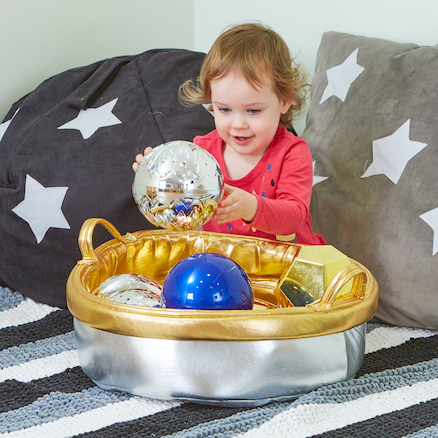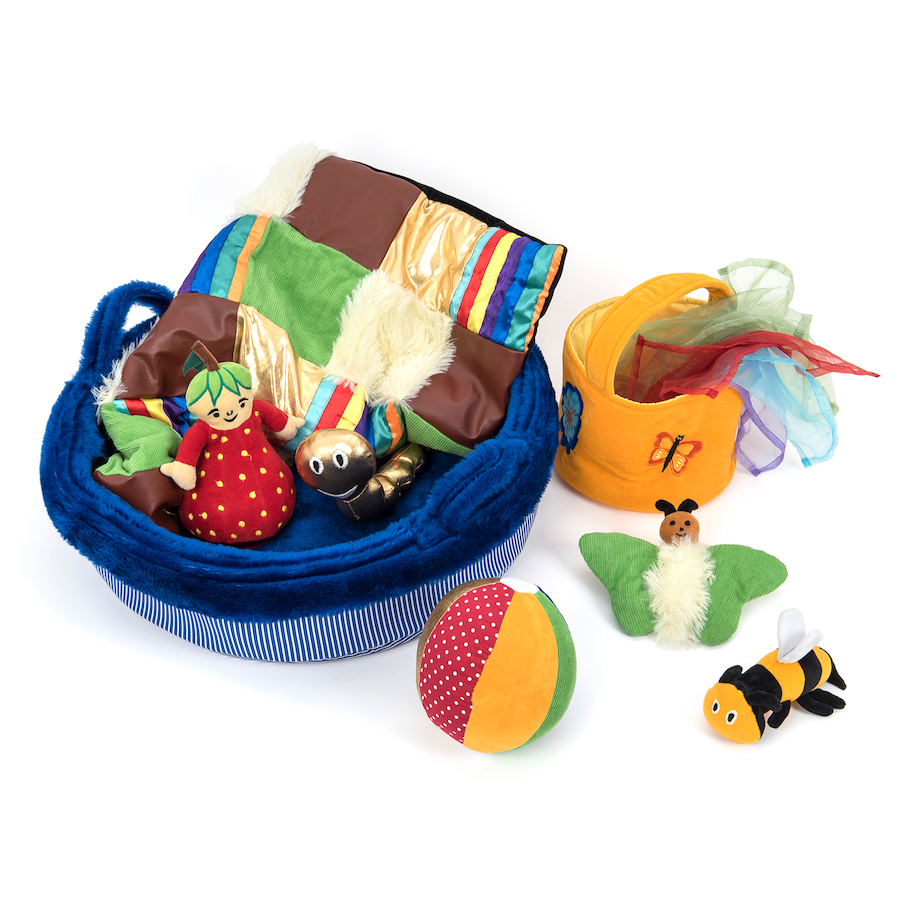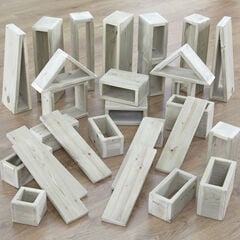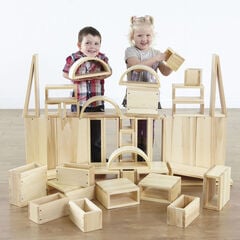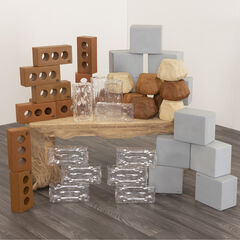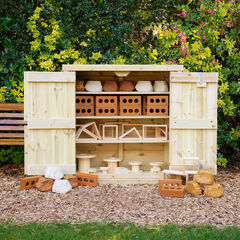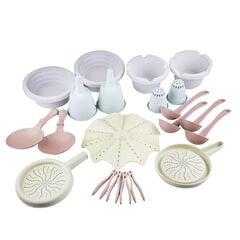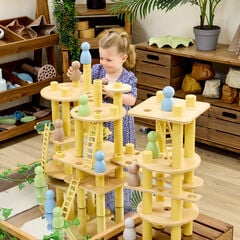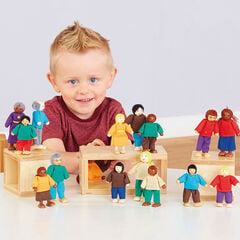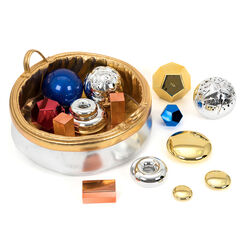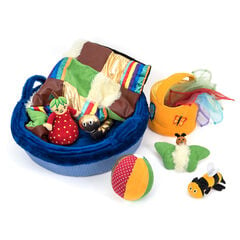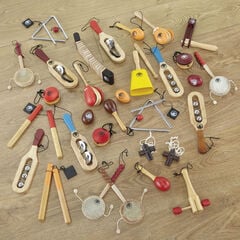What would you buy with an unlimited budget?
Imagine someone granted you an unlimited budget to spend on resources for your Early Years setting. I wonder what your priorities would be? What would you choose and why? What would your top ten resources be? It’s an interesting mental exercise that causes us to reflect on the purpose of such items. If, like me, you have ever wandered around Early Years trade exhibitions, you may have been tempted by what was on display. You may even have parted with some of your (in reality) limited budget in anticipation of the children’s excitement at the arrival of some new resource.
What will they make of it? Perhaps, like me, several weeks later you might have discovered whatever it is, left out in the rain or dumped in a cupboard under a pile of other stuff with several parts missing or just broken. Maybe a new and intrepid member of the team retrieves it from its hiding place six months later and asks what it’s for? The team might have been less enthusiastic about it than you were in the moment when you bought it and the children became bored with it very quickly. For whatever reason, the shiny new thing might not have lived up to expectations.
In my experience, despite our best intentions, sometimes items find a home in our settings that have sneaked past quality control. Well-meaning donations; impulse buys; grubby, ripped, incomplete or broken things; gendered resources. It is also important to consider what is not there. How do our resources represent children’s home cultures, provide aspiration and enable everyone of all abilities to learn and grow?
Do the resources earn their place?
What are the principles by which we decide what enters our ‘enabling environments’? For me, every item should justify its presence in terms of its potential to support children’s development. Have I really thought about how it might be used and how it adds to what we already have? I find it a helpful exercise to periodically audit our settings, to enter each and every learning space, make an inventory of every item and evaluate it against my mental checklist to see which if any of these criteria it meets:
Does it –
- fit with our values, ethos and mission?
- bring joy or delight?
- meet our safety threshold?
Might it –
- inspire, surprise, provoke or challenge?
- extend learning, add to knowledge and support language development?
- foster creativity, imagination, co-operative play?
- support one or more aspects of physical development, risk taking, problem solving, persistence, independence building?
- comfort, calm or soothe?
- enable self-expression?
Top ten must haves
If we are starting from scratch it might be helpful to construct our own list of top ten must haves. I am sure many of the same items would appear in such lists. Whittling this down to only ten individual items is challenging – what to include, what to leave out and why? So I present a list for consideration in the hope that it might provoke discussion about the value of resources already in settings and how to evaluate what to supplement these with. This is not a definitive top ten and it is not in any particular order.
WoodenBlocks
Blocks come in all shapes and sizes. They may be solid or hollow. It is their open-ended and tactile quality that makes them suitable for all ages and abilities, fostering creativity, construction and imagination. What might we observe when children engage in block play? Deep concentration, persistence, cooperation, imaginative play, practical experience and application of mathematical concepts, and rich opportunities for language development.
Construction
There are many well-known construction resources on the market made from various materials. I find it disappointing when these are provided as a kit with a predetermined end product in mind – follow the instructions to create the object portrayed on the box. Whilst some individuals enjoy the challenge this presents (think Star Wars fans), there is obviously greater scope for creativity with a set of open-ended building resources. Without endorsing one brand over another, in my experience, children are often drawn to “Classic” magnetic tiles as a construction medium. The clever design of plastic tiles with embedded magnets empowers children to easily build, create and extend. I have witnessed teenagers and even adults absorbed in their own creation effort using these types of products and working together with others designing and problem solving.
Sand and Water
The fluid nature of these elements makes them ideal resources. They are a staple of Early Years practice both indoors and outside. Both are suitable for use in small to large amounts. They are ideal for exploring mathematical concepts – capacity, volume, space, shape, measure; the nature of materials and their chemistry – dripping, pouring, flow, ripples, splashing, adding water to sand; freezing water, combining water or sand with other materials such as paint. Most importantly they provide opportunities for fun and delight. Both need something to contain them. Sand and water trays are ideal accessible containers for children to stand at. There are endless possibilities of resources to add to the sand or water tray. Have you tried pegging socks on a washing line over the sand tray, ready to be filled?
Books
In a world of increasing digital media, the benefits derived from physical books persists. In my opinion, sharing a story from a book with a child or a group of children is a very precious experience. Our youngest children quickly learn that pictures and words on successive pages contain and convey information. I apply the same principles to books as I do to all resources – each book should justify its presence. Have we considered what books support our intent for each cohort of children within each age-group? How do we support progression within different age groups and abilities? Are we clear what the children will learn from each book? Do they contain examples of the following:
- Language development, rhythm, rhyme, poems
- Use of imagination, drama
- Teaching about feelings and emotions – fun, happiness, fear, loss, kindness, sympathy, getting cross and calming down etc
- Representation, reflecting cultures, diversity, equal opportunities, role modelling
- Non-fiction books. Knowledge of the world around us e.g. cookery books in the role play area
Mark-making resources
From the earliest age, most children develop an understanding of their own agency and ability to make marks, from moving a finger through sand to drawing, painting and later to forming letters. Resources to support children’s muscle control, the progression of their ability and to enable creativity and expression, should be managed and readily available. Selecting materials and tools to support children’s mark making gives opportunity for the widest thinking, from crayons, paint and pencils to shaving foam, mops, brooms, mud, laptops, tablets, paint rollers and vegetables.
Puzzles
Jigsaw puzzles are available to suit all ages. The variety and complexity ranges across all abilities supporting the development of hand-eye coordination, dexterity, fine motor skills, manipulation, shape recognition, orientation, pattern matching, concentration, persistence and memory. The most important characteristic of a jigsaw is that it needs to be complete – all pieces present. On any given day, I wonder what percentage of jigsaws in Early Years settings across Britain are actually complete and how much effort goes into hunting missing pieces?
Musical Instruments
The ‘arts’ encompass the multiplicity of ways that we as human’s express our inner emotions, including music. Research conducted by Stephen Malloch and Colwyn Trevarthen revealed babies’ innate musicality, something that we regularly observe empirically – from birth, young children respond to and love music and movement. Experiencing music – either recorded or live – in a group, is an opportunity for participation in movement as well as joining in with and contributing to rhythm, pitch, volume and melody. A wide range of instruments from different countries enables children of all abilities to respond and to express their inner feelings. Music is a powerful teaching medium because of its impact on memory – the ability to store and retrieve e.g. nursery rhymes and songs. But music is so much more – ‘Music expresses that which cannot be put into words and cannot remain silent.’ Victor Hugo
Small World
In their ‘small worlds’, our children have agency and empowerment to enact whatever is important to them. This might be imaginative, problem solving, creative or replaying traumatic experiences. Children are free to make their own decisions and to control the narratives. Like avatars in online worlds, they are free to be whoever they choose, taking on and voicing different characters. These can be valuable experiences supporting the building of confidence and self-esteem through independent, parallel or cooperative play. A range of small world figures – people and animals, supports rich opportunities for language development and teachable moments through sustained shared thinking where the adult is invited in as a play partner. It is important to ensure children are able to see themselves represented in any human figures provided.
Treasure Baskets / Heuristic Play
Just like doodling on paper, many of us relate to the notion of exploring a collection of objects and receptacles. Maybe just enjoying the sight, sounds and feel of what is on offer. How many schemas do we relate to – enveloping, transporting, enclosing etc, as we subconsciously fill a tin with strings of beads or feel the soft bristles of a brush against our skin? Collections of unrelated items certainly tick boxes on my mental resource purpose checklist. Those that stimulate the senses and provide endless opportunities for critical thinking even at a very young age. Heuristic play is another environment where the child determines the outcome. Nothing is predetermined or expected and once again, there are rich opportunities for adults to engage and to build relationship and language.
Physical Activity
What resources do children need to help develop physically and what should we provide in our setting? To me, the question that comes before these is what physical capabilities are we looking to develop? What is the intent? It also depends on what other opportunities for physical development children at our setting have at home or in their community, and what space we have available either indoors or outside, on or off site, to use equipment and resources.
At the most basic level, developing gross motor skills, balance, proprioception and the vestibular system can all be supported with just available space. Adding in balls, bean bags of different sizes, hoops and ropes can extend activities to encompass the development of specific physical capabilities such as throwing, catching or skipping. But if we have the space and finances, a sturdy climbing frame with a slide and maybe a swing can provide the facility for more physical development.
So there is a list of ten categories of resources. I hope you find this a useful list to consider and that my justification for each of them is helpful. I wonder how they compare to yours? What else could I have added in – crates, mud kitchen, cardboard, blankets, role play? The options are endless and maybe we all have our own emphasis and philosophy. That is what makes the world interesting and our provision adapted to the needs of our children.
I believe nothing should be fixed. We need to meet the needs of today’s cohort. What resources might this take? Perhaps we need to put away some things for now or maybe add in something new. Sometimes it’s good to ring the changes just to keep things fresh. Have you ever tried a ‘no toys’ week – put away everything and replace with boxes and blankets? It’s a lot of fun and amazing what it sparks in the children.
Over and above the resources and equipment we provide, let’s remember. The most important element in our settings are these: sufficient time and space; and engaged and supportive adults.
Many thanks to David Wright for writing this blog for us.



